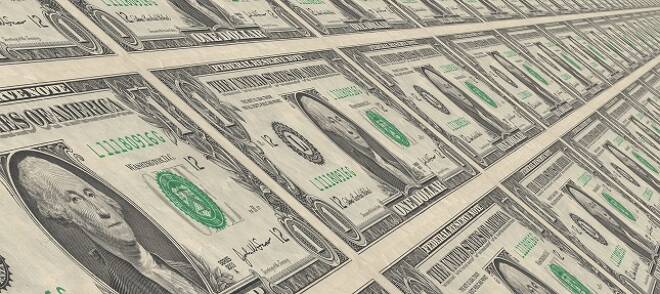Advertisement
Advertisement
U.S. Dollar Posts First Weekly Gain Since Late December
By:
The U.S. Dollar posted its first higher close against a basket of currencies last week since the week-ending December 23, helped by strong economic data,
The U.S. Dollar posted its first higher close against a basket of currencies last week since the week-ending December 23, helped by strong economic data, rising U.S. Treasury yields and remarks about tax reform by President Trump.
March U.S. Dollar Index futures closed at 100.791, up 0.949 or +0.95%.
The dollar began picking up strength early in the week in a continuation of the previous week’s technical reversal bottom and after investors had the week-end to digest the February 3rd U.S. Non-Farm Payrolls report.
If you recall, after the jobs data was released, the general opinion by the news analysts was that it was a mixed report. They cited a bullish headline number and a weaker-than expected average hourly earnings figure as one reason why the Fed would likely pass on a March interest rate hike. The odds of a Fed rate hike in March even dropped from 18% before the jobs data to 9% on Monday morning. However, this reaction didn’t seem to affect the U.S. Dollar Index. Traders also started to support the notion of two rather than three rate hikes in 2017.
The rally by the dollar began to pick up steam on February 7 after Philadelphia Fed President Patrick Harker said he could support raising interest rates at the central bank’s March meeting.
“I think March is on the table. I would never take a meeting off the table,” Harker told reporters after a speech in San Diego. He also reiterated his support for about three rate increases this year. At the end of the day, the CMEGroup’s Fed Fund Indicator had jumped to 13%.
Throughout the week, the dollar’s rise was supported by various factors including a positive response to weekly unemployment claims and Final Wholesale Inventories.
On February 9, the dollar received a boost from Trump after he promised a “phenomenal” tax plan, but offered no specifics other than citing the need for a lower tax burden on businesses. He also said the plan would be delivered in two to three weeks.
At the end of the week, Trump’s actions may have signaled the end to the trade wars talk when he agreed to honor China’s “One China” policy last night in his first call with Chinese President Xi Jinping. Trump’s last piece of business at the end of the week was a meeting with Japanese Prime Minister Shinzo Abe. At the end of the meeting, Trump pledged close security and economic cooperation with Japan.
Other currencies also contributed to the U.S. Dollar’s strength including the Australian and New Zealand Dollars, and the Japanese Yen.
The Australian Dollar drifted mostly sideways to lower as investors continued to react to the RBA’s wait-and-see attitude about interest rates. The NZD/USD closed the week down 1.52% after the RBNZ signaled plans to keep interest rates on hold for some time. Increased demand for higher risk assets and rising U.S. Treasury yields make the Japanese Yen a less desirable investment.
About the Author
James Hyerczykauthor
James Hyerczyk is a U.S. based seasoned technical analyst and educator with over 40 years of experience in market analysis and trading, specializing in chart patterns and price movement. He is the author of two books on technical analysis and has a background in both futures and stock markets.
Advertisement
